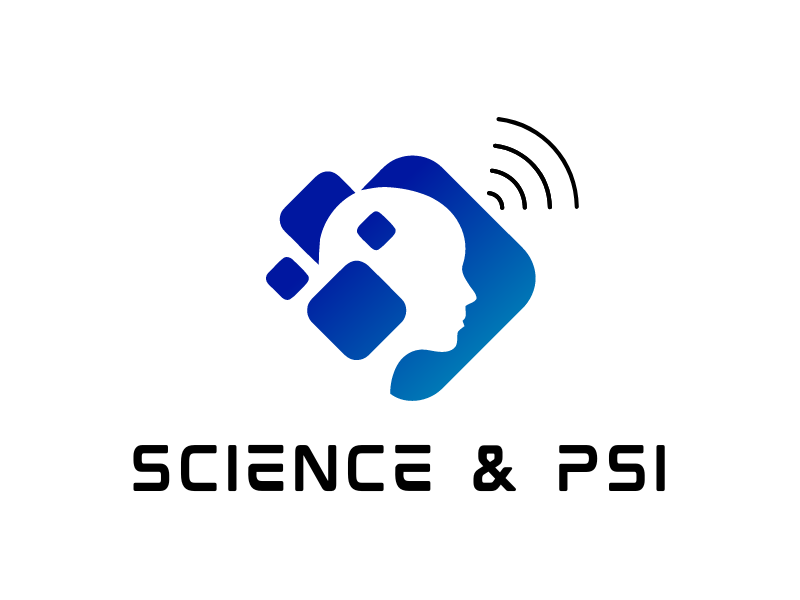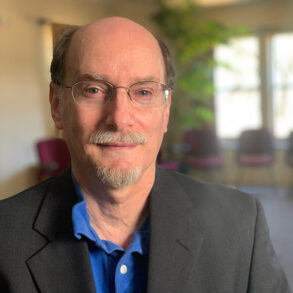In the age of social media, it’s not uncommon to stumble upon curious spectacles: self-proclaimed psychics attempting to quantify their so-called “psi” abilities, while audiences watch in awe. It’s an entertaining spectacle, to say the least. But, let’s be clear – it’s not science. The digital stage may dazzle followers, but lurking behind the smoke and mirrors are a slew of variables that undermine any genuine scientific investigation. From reading body language and voice fluctuations to the Barnum effect, the potential for deception is ever-present. Moreover, the audience is left wondering if those involved collaborate to put on a grand show for their online followers. Social media influencers, after all, are unlikely to publish their findings or admit to any wrongdoing; it’s often just another means to reaffirm their preconceived beliefs, be they for or against the existence of psi phenomena.
Yet, amidst this spectacle, there’s another player on the stage. Enter the pseudo-skeptics, those who, in their quest to discount psi abilities altogether, contribute to the online drama. They, too, add fuel to the fire, engaging in debates that often lack the rigor of genuine scientific inquiry. And then there are the psychics themselves, drawn to these digital arenas in search of self-validation, further complicating matters. But beyond the realm of illusion and skepticism lies a growing movement of researchers who have recognized the need for a new approach. In this article, we’ll embark on a journey through the annals of parapsychological research, exploring both its past methodologies and failures and the updated approaches that are breathing fresh life into this enigmatic field. We’ll delve into the impact of these methodologies on psychology at large, and we’ll introduce you to the current pioneers of psi research, individuals whose work is reshaping the boundaries of what we consider scientifically possible. Finally, we’ll ponder what all of this means going forward – the potential for scientific acceptance, the broader implications of psi research, and the exciting prospects that lie ahead.
I. Past Methodologies and Failures: The Ganzfeld Experiment
In the annals of parapsychology, few experiments have garnered as much attention and debate as the Ganzfeld experiment. Between 1974 and 1982, parapsychologists conducted 42 Ganzfeld experiments in their quest to unlock the mysteries of psi phenomena. The culmination of these efforts was presented by Charles Honorton in 1982 at the annual convention of the Parapsychological Association. Honorton’s presentation aimed to offer a summary of the results accumulated from these experiments, with a bold claim – that these findings provided sufficient evidence to validate the existence of psi.
However, as is often the case with research at the frontier of scientific inquiry, dissenting voices emerged. Among them was Ray Hyman, a prominent psychologist and a vocal critic of parapsychology. Hyman’s critique of the Ganzfeld experiments was rooted in the belief that the methodologies used were far from rigorous. He pointed to three significant flaws that marred the experiments. First, he criticized the randomization process used for target selection, suggesting it was less than ideal. Second, he found fault with the randomization employed in the judging procedure, casting doubts on its validity. Third, Hyman noted a general deficiency in the documentation of these experiments, which hindered the transparency and replicability of the studies.
Hyman’s scrutiny didn’t stop there. To assess each of the 42 Ganzfeld experiments, he devised a comprehensive set of 12 categories of flaws. These categories encompassed not only statistical defects but also procedural flaws such as inadequate randomization, insufficient security measures, potential sensory leakage, and inadequate documentation. Troublingly, none of the experiments emerged unscathed; every single one exhibited at least one of the 12 identified flaws.
One particularly concerning aspect highlighted by Hyman was the lack of duplicate target sets of pictures in over 60% of the studies. This omission left room for potential biases and cues that could affect the outcomes. Moreover, sensory leakage, a critical concern in psi research, was not consistently guarded against in over half of the studies.
The debate between Honorton and Hyman reached its peak when both researchers independently conducted meta-analyses of the same studies in 1985. It became increasingly evident that the flaws identified by Hyman were substantial and cast serious doubt on the validity of the Ganzfeld experiments. Even Honorton, the proponent of these studies, came to concur with Hyman’s assessment – the 42 Ganzfeld experiments, as they stood, could not independently substantiate the existence of psi.
In 1986, in a remarkable collaborative effort, Hyman and Honorton published a Joint Communiqué. In this statement, they acknowledged the methodological shortcomings of the Ganzfeld experiments and proposed remedies. They advocated for computer-automated controls that could eliminate issues related to randomization and other methodological pitfalls. The agreement also stressed the necessity of replicating these studies to establish firmer conclusions and advocated for higher standards in conducting Ganzfeld experiments.
In the turbulent history of psi research, the Ganzfeld experiment serves as a stark reminder of the challenges in balancing scientific rigor with the pursuit of the unexplained. As we explore the evolution of methodologies in the field of parapsychology, the Ganzfeld experiment stands as a pivotal point in the quest for credible evidence of psi phenomena.
I. The Updated Approaches and Their Impact on Psychology
In 1986, a turning point in the realm of parapsychological research occurred when Ray Hyman and Charles Honorton, two voices from opposing sides of the scientific aisle, joined forces to address the methodological challenges that had long plagued the field. Their collaboration resulted in a groundbreaking document known as the “Joint Communiqué.” This joint effort was pivotal in reshaping the trajectory of psi research and establishing more rigorous standards.
One of the most notable contributions of the Joint Communiqué was the proposal for a revolutionary approach – the utilization of computer-automated controls. This innovative suggestion aimed to eliminate methodological issues related to randomization and other potential sources of bias. By automating the process, researchers could ensure that randomization was truly random, removing any potential biases that may have influenced results in the past.
One critical area addressed in the Joint Communiqué was the imperative need to control for sensory leakage, a longstanding concern in psi experiments. Both Hyman and Honorton concurred that future investigators should exert every effort to eliminate any possibility of sensory communications between the sender and receiver, both during the Ganzfeld session and during the judging process. They acknowledged that the two-experimenter psi Ganzfeld experiment was effective in preventing sensory leakage during the Ganzfeld period. Additionally, the use of duplicate target pools or the binary coding system was recommended to safeguard against sensory leakage at the time of judging.
A significant emphasis was placed on the documentation of randomization procedures. The Joint Communiqué laid out specific requirements for detailing the method of target selection. It emphasized the importance of including information about the individual responsible for randomization, the source of randomness, and the method of sampling the random source. For example, in a hypothetical Ganzfeld experiment involving multiple target pools and pictures, the document illustrated detailed procedures for ensuring proper randomization using various methods, including random number tables, pseudorandom generators, and hardware random number generators.
Crucially, the Joint Communiqué acknowledged the necessity of replication in psi research. Both Hyman and Honorton agreed that to draw final conclusions, these studies needed to be replicated rigorously. This call for replication was not only essential for building a more robust body of evidence but also for strengthening the credibility of the field within the broader scientific community.
II. The Updated Approaches and Their Impact on Psychology (Continued)
While the Joint Communiqué offered groundbreaking solutions to methodological issues in psi research, it also recognized the importance of exercising caution when implementing these innovations. In particular, the document cautioned against placing undue reliance on microcomputer random functions. These functions, while convenient, often lacked documented algorithms and, in some cases, were known to produce spurious results. Hansen’s work in 1986, for instance, highlighted the potential pitfalls associated with such algorithms. To ensure the credibility of research applications, the Joint Communiqué advised researchers to be mindful of the limitations of these tools.
Hardware random number generators, another method recommended for achieving proper randomization, were not without their own challenges. They could have design flaws or develop intermittent problems that compromise their reliability. Even though technical descriptions of the hardware were desirable, these descriptions alone could not substitute for empirical tests of the output. Ideally, randomness tests should be performed on the actual targets used in an experimental series. However, the typically small sample sizes in psi Ganzfeld studies made these tests of limited value. As a compromise, control tests were suggested to ensure the adequacy of randomness in the selected targets.
Addressing the issue of sequential bias, the Joint Communiqué noted that in Ganzfeld experiments, where only one target was selected per session, this form of bias was unlikely to be a significant concern. Researchers could focus their attention on performing frequency analyses to assess the degree to which targets occurred with equal probability, a fundamental aspect of randomization.
Ray Hyman, in his commitment to robust methodologies, proposed a method for assuring adequate randomization that included empirical baselines in addition to theoretical ones. This involved systematically comparing the percipient’s first choice against both the intended target and the intended target for a controlled trial. If the randomization procedure was sufficient, these comparisons should yield observed means and standard deviations consistent with the theoretical distribution under the null hypothesis. This approach echoed the “cross-check” method employed in early card-guessing experiments, emphasizing the importance of empirical validation in addition to theoretical safeguards.
A pervasive issue that confronted researchers in all scientific disciplines, including psi research, was that of multiple analysis. The Joint Communiqué acknowledged that determining the size of the total critical region could be challenging, especially when hypotheses had not been worked out in detail before data collection. It underscored the importance of specifying all confirmatory tests and the precise critical regions in advance of data collection, with an explicit statement of these tests in experimental reports. This commitment to predefining tests aimed to prevent confusion between confirmatory tests and suggestive findings, which would require future confirmation through additional experiments. To manage the challenge of multiple tests, researchers were advised to make appropriate adjustments to maintain the overall error rate within commonly accepted limits. One recommended approach was the use of the Bonferroni inequality, a statistical method that adjusted significance levels to account for multiple comparisons.
In summary, the Joint Communiqué’s influence extended beyond the realm of psi research, instilling a commitment to transparency, empirical validation, and methodological rigor. Its recommendations reverberated in psychology and the broader scientific community, shaping the way researchers approached experimentation and data analysis, and emphasizing the importance of robust methodologies in exploring the unknown.
I. The Ganzfeld debate continued: A response to Milton and Wiseman
The landscape of psi research has long been marked by debates and discussions, with one of the most prominent being the Ganzfeld debate. This debate gained renewed vigor through a series of articles published in Psychological Bulletin. In this article, we delve into the responses and counterarguments surrounding this contentious issue.
A pivotal point in this discourse was the exchange between J. Milton and R. Wiseman (2001) and L. Storm and S. Ertel (2001). The heart of the matter lay in J. Milton and R. Wiseman’s (1999a) assertion that the evidence for psi in the Ganzfeld experiments was not replicable. Storm and Ertel took issue with this claim and offered a counter-narrative that challenged the interpretation and application of the Joint Communique authored by R. Hyman and C. Honorton (1986).
One of the central contentions raised by Storm and Ertel was that J. Milton and R. Wiseman (2001) selectively quoted from the Joint Communique to suit their argument. They accused Milton and Wiseman of cherry-picking quotes that featured skepticism about psi phenomena while disregarding quotes that supported psi. This selective quoting painted a misleading picture, as it emphasized skepticism and downplayed accumulated evidence that questioned the credibility of pre-Communique Ganzfeld researchers.
Furthermore, Storm and Ertel highlighted the magnitude of statistical significance in empirical evidence. They contended that dismissing the statistically significant results from Honorton’s (1985) database due to methodological concerns was unwarranted. In scientific inquiry, significance testing serves as a crucial means of determining the existence of experimental effects. Even if future research sought to replicate or refine these findings, the statistical confidence derived from independent studies remains an essential facet of the scientific process.
In their critique, Storm and Ertel also drew attention to the bidirectionality test, a unique psi indicator that J. Milton and R. Wiseman (2001) had seemingly overlooked. This test holds importance in assessing the authenticity of psi phenomena, and its omission from the discourse was noted by Storm and Ertel.
The debate surrounding the Ganzfeld experiments underscores the complexities and nuances of psi research. As we navigate the evolving landscape of psi research and its methodologies, it is vital to consider diverse perspectives and engage in constructive dialogue that advances our understanding of these enigmatic phenomena. For the future of Ganzfeld and psi research in general, Storm and Ertel recommend a process-oriented strategy that fosters collaboration and critical evaluation.
I. The Current Pioneers in Psi Research
In the ever-evolving landscape of psi research, a new era was ushered in by American psychologist Daryl Bem in 2011 when he presented groundbreaking findings that challenged the very fabric of our understanding of time and precognition. Bem’s study delved into the realm of precognition, the controversial ability to sense the future, and the ramifications of his research were nothing short of seismic.
Jeff Galak, a psychologist at Carnegie Mellon University, succinctly encapsulated the significance of Bem’s work: “This would probably be the most important research paper I would say ever published in any field if it were true.” The implications of Bem’s findings, if validated, would have far-reaching consequences, reshaping our perception of the universe, physics, and psychology itself. Time would cease to be a linear concept, and the ability to glean information from the future would challenge the very core of our understanding of reality.
The initial shockwaves of Bem’s research prompted a coordinated response from the scientific community. The Open Science Collaboration assembled a global consortium of 270 scientists from 17 countries, united by the shared goal of rigorously scrutinizing Bem’s groundbreaking work. Their approach was systematic and methodical, selecting 100 studies published in 2008 from reputable psychology journals as their test sample. The objective was to faithfully replicate these experiments to ascertain the robustness of their findings.
In 2015, the results of this massive replication endeavor were unveiled, and they were nothing short of astounding. Only 36 percent of the replications yielded successful outcomes. The implications were profound: a significant portion of previously published research in psychology was now under scrutiny and subject to doubt. Even Michael Inzlicht, a psychologist at the University of Toronto, found that research papers in his own field could not withstand the rigorous lens of replication.
In the wake of these revelations, the standards for psychology research underwent a transformation. A practice known as ‘pre-registration’ gained traction, with researchers required to outline their study’s design, hypotheses, and data analysis plan before embarking on experiments. This pre-registration protocol aimed to prevent data manipulation and the selective reporting of positive results.
Additionally, over 200 scientific journals, both within and outside the realm of psychology, began to adopt the practice of publishing “registered reports.” These reports involved evaluating research proposals based on methodology rather than the allure of their findings. The shift towards greater transparency and methodological rigor aimed to address the shortcomings of past practices, where data analysis and reporting were often skewed towards preferred narratives.
Daryl Bem’s groundbreaking research not only challenged conventional notions of time and precognition but also catalyzed a reevaluation of research practices across scientific disciplines. In the quest for scientific truth, the psi research community, like its counterparts in other fields, has embraced enhanced methodological rigor and transparency as it ventures into uncharted territories. As psi researchers continue to pioneer new frontiers, the lessons learned from these transformative changes will shape the future of scientific exploration and discovery.
II. The Current Pioneers in Psi Research: A Global Exploration and its Omission from Mainstream Journals
In the year 2011, Daryl Bem, one of the prominent figures in the field of psi research, unfurled a remarkable revelation that would send shockwaves through the scientific community. His report, published in the Journal of Personality and Social Psychology, unveiled nine experiments that ventured into the intriguing realm of precognition. Bem’s work postulated that an individual’s cognitive and emotional responses could be influenced by events randomly selected after their responses had already been recorded—a phenomenon challenging the conventional boundaries of time and perception.
To encourage replications, all materials needed to conduct them were made available on request. Most skeptics of psi, however, often ignore the fact that 90 experiments from 33 laboratories in 14 countries yielded an overall effect greater than 6 sigma, z = 6.40, p = 1.2 × 10^-10, with an effect size (Hedges’ g) of 0.09.
Even when Bem’s original experiments were excluded from the analysis, the combined effect size for replications conducted by independent investigators remained robust at 0.06, marked by a z-value of 4.16 and a p-value of 1.1 × 10^-5. The Bayesian Factor, once again, exceeded the criterion for “decisive evidence,” standing at an impressive 3,853.
These results engendered intense discussions and rekindled debates surrounding the controversial domain of precognition and other enigmatic phenomena collectively known as psi. The boundaries of what we understand about time, perception, and human cognition continue to expand, guided by the pioneering spirit of researchers like Daryl Bem and the collective efforts of scientists around the world who dare to explore the uncharted territories of the human mind.
However, it’s worth noting that these groundbreaking studies and their remarkable results have often been omitted or overlooked by mainstream science journals and other notable publications, underscoring the resistance and reluctance within the scientific establishment to embrace such paradigm-shifting findings. Despite the profound implications of this research, it remains on the fringes of scientific discourse, awaiting the broader recognition it undoubtedly deserves.
III The Current Pioneers in Psi Research
Within the field of parapsychology and psi research, several contemporary researchers have made significant contributions to the exploration of anomalous phenomena. One of the prominent figures in this domain is Dr. Dean Radin, whose extensive research has garnered attention and sparked debates in scientific circles. Dr. Radin’s work stands as a testament to his dedication to understanding the mysteries of the human mind and its potential connection to unexplained phenomena.
Dean Radin’s Accomplishments:
1. Experimental Exploration: Dean Radin is renowned for his pioneering experimental investigations into various psi phenomena. His research delves into topics such as telepathy, precognition, and psychokinesis, often using rigorous scientific methodologies to examine these phenomena.
2. Quantum Physics and Consciousness: Radin’s work frequently intersects with the realm of quantum physics and its implications for consciousness. He explores the idea that the quantum world may offer insights into the nature of consciousness and its potential to influence external events.
3. Statistical Significance: One of Radin’s notable achievements is his consistent demonstration of statistically significant results in psi experiments. His research often involves carefully designed studies that aim to rule out alternative explanations, making his findings particularly compelling to proponents of psi phenomena.
4. Books and Publications: Dr. Radin has authored several books on parapsychology and related topics. His books, such as “The Conscious Universe: The Scientific Truth of Psychic Phenomena” and “Entangled Minds: Extrasensory Experiences in a Quantum Reality,” have provided valuable insights into the scientific exploration of psi.
5. Advocacy for Psi Research: Radin is not only a researcher but also an advocate for the legitimacy of Psi research. He contends that the evidence for psi phenomena challenges conventional scientific paradigms and encourages open-minded exploration of these anomalies.
6. Institute of Noetic Sciences: Dean Radin has been associated with the Institute of Noetic Sciences (IONS), where he served as the Chief Scientist. IONS is dedicated to exploring the frontiers of consciousness and human potential, aligning with Radin’s research interests.
7. Public Engagement: Radin actively engages with the public through lectures, interviews, and public speaking events. His efforts to bridge the gap between scientific research and public awareness have contributed to a broader conversation about the nature of consciousness and psi phenomena.
Dean Radin’s Research Highlights:
While Dr. Radin’s research spans various psi phenomena, some of his notable studies include:
Presentiment Experiments: Radin conducted experiments suggesting that individuals can exhibit physiological responses before experiencing a randomly selected stimulus event. These findings challenge conventional notions of time and consciousness.
Double-Slit Experiment: Building on the famous double-slit experiment in quantum physics, Radin explored whether human consciousness could influence the behavior of particles. His research raised intriguing questions about the role of consciousness in the physical world.
-Global Consciousness Project: Radin contributed to the Global Consciousness Project, which monitors random number generators worldwide to investigate whether global events can influence the randomness of these devices, hinting at potential global consciousness effects.
Dean Radin’s work continues to inspire both proponents and skeptics of psi phenomena. His dedication to rigorous research and his willingness to engage in scientific dialogue have earned him recognition as a contemporary pioneer in the field of psi research.
Mr. Stephan A. Schwartz is an American author, researcher, and teacher known for his work in the fields of parapsychology, consciousness studies, and human potential. Here is some information about Mr. Stephan Schwartz:
1. Background and Education: Stephan Schwartz was born on August 15, 1944. He earned his Bachelor of Arts degree in Sociology from New York University and went on to pursue postgraduate work at Columbia University. His academic background includes studies in psychology, anthropology, and the social sciences.
2. Parapsychology and Remote Viewing: Mr. Schwartz is widely recognized for his research in parapsychology and remote viewing. Remote viewing is a phenomenon in which individuals claim to access information about distant or unseen targets using extrasensory perception (ESP). Schwartz conducted experiments and studies in this field, contributing to the understanding of human psychic abilities.
3. Books and Publications: He has authored numerous books and research papers on subjects related to consciousness, psychic phenomena, and the nature of reality. Some of his notable books include “The Secret Vaults of Time,” “The Alexandria Project,” and “Opening to the Infinite.” These books explore topics such as remote viewing, precognition, and the mysteries of human consciousness.
4. Global Consciousness Project: Mr. Schwartz is a co-founder of the Global Consciousness Project (GCP), which is an ongoing research initiative that examines whether global events can influence the behavior of random number generators (RNGs). The project explores the concept of a global consciousness or interconnected human consciousness.
5. Lecturer and Educator: He has lectured at various academic institutions and conferences around the world, sharing his research findings and insights into consciousness and psi phenomena.
6. Holistic Health and Wellness: In addition to his work in parapsychology, Mr. Schwartz has an interest in holistic health and wellness. He explores the integration of mind, body, and spirit in achieving overall well-being.
7. Media Appearances: Stephan Schwartz has appeared in various media outlets, including television and radio programs, to discuss his research and ideas related to consciousness and psi phenomena.
8. Humanitarian Efforts: He is involved in humanitarian and peace-building efforts. His work extends to projects focused on promoting peace, interfaith dialogue, and global understanding.
It’s important to note that Mr. Stephan A. Schwartz’s work has generated both interest and skepticism within the scientific and paranormal communities. He continues to be an influential figure in the exploration of human consciousness and psi phenomena.
Conclusion
In our voyage through the world of psi research, we’ve charted the stars of scientific methodology. From battling the skeptics and combating sensationalism, we’ve soared through the annals of parapsychology.
We started with the rocky beginnings of the Ganzfeld experiment, learning from its missteps and methodological pitfalls. The pivotal moment came in ’86, with the Joint Communiqué, setting new standards and demanding precision in controls, randomization, and documentation.
Our exploration navigated the tricky waters of multiple analyses, highlighting the need for pre-planning and stringent testing. Fast forward to the present, and we witnessed the transformation of psychology research, with a spotlight on pre-registration and methodological integrity.
So, what’s the psi research lesson here? Well, psi research, with its mind-boggling implications, hinges on scientific rigor. Stringent methodologies are the North Star guiding us through this uncharted territory. By staying true to scientific principles, we’re uncovering the mysteries of the human mind and pushing the boundaries of what’s possible. The psi research journey continues, and we’re just scratching the surface of the great unknown.
How to Conduct Parapsychological Research with Stephan A Schwartz
Citations:
Hornorton, C. (1985, March). Quantitative research – proquest. Meta-Analysis of Psi Ganzfeld.https://www.proquest.com/openview/058c84ecfd436cf965eacb1556000ab0/1?pq-origsite=gscholar&cbl=2042228
A Joint Communiqué: The Psi Ganzfeld ControversyHyman, Ray; Honorton, Charles. The Journal of Parapsychology; Durham, N.C. Vol. 50, Iss. 4, (Dec 1, 1986): 351.
Dalton, K. S., Morris, R. L., Delanoy, D., Radin, D. I., & Wiseman, R. (1996). Security measures in an automated ganzfeld system. Journal of Parapsychology, 60, 129-147.
Milton, Julie. The Journal of Parapsychology; Durham Vol. 63, Iss. 4, (Dec 1999): 309-333.
Storm & Ertel (2001). Does psi exist? Comments on Milton and Wiseman’s (1999) meta-analysis of ganzfeld research. Psychological Bulletin. pdf
Bem, D. J. (2011). Feeling the future: Experimental evidence for anomalous retroactive influences on cognition and affect. Journal of Personality and Social Psychology, 100(3), 407–425. https://doi.org/10.1037/a0021524
Daryl Bem1, Patrizio E. Tressoldi https://orcid.org/0000-0002-6404-00582, Thomas Rabeyron3,4, Michael Duggan5 Feeling the future: A meta-analysis of 90 experiments on the anomalous anticipation of random future events [version 2; peer review: 2 approved]
Parapsychology’s Contributions to Mainstream Science, By Caroline Watt
http://www.koestler-parapsychology.psy.ed.ac.uk/cwatt/Documents/RevisedAddress.pdf
Psychology replication crisis
https://www.cbc.ca/radio/ideas/psychologists-confront-impossible-finding-triggering-a-revolution-in-the-field-1.5344467








